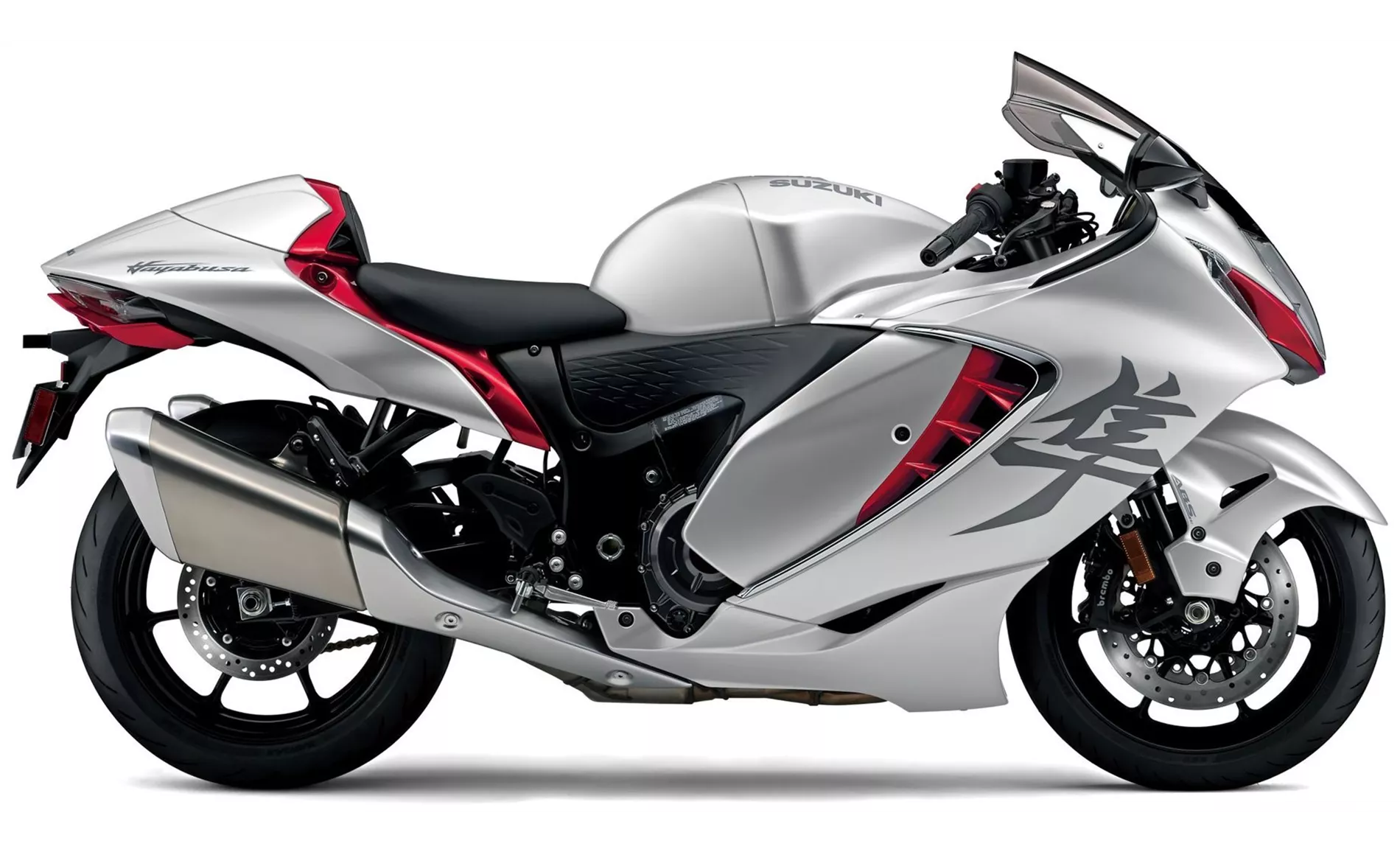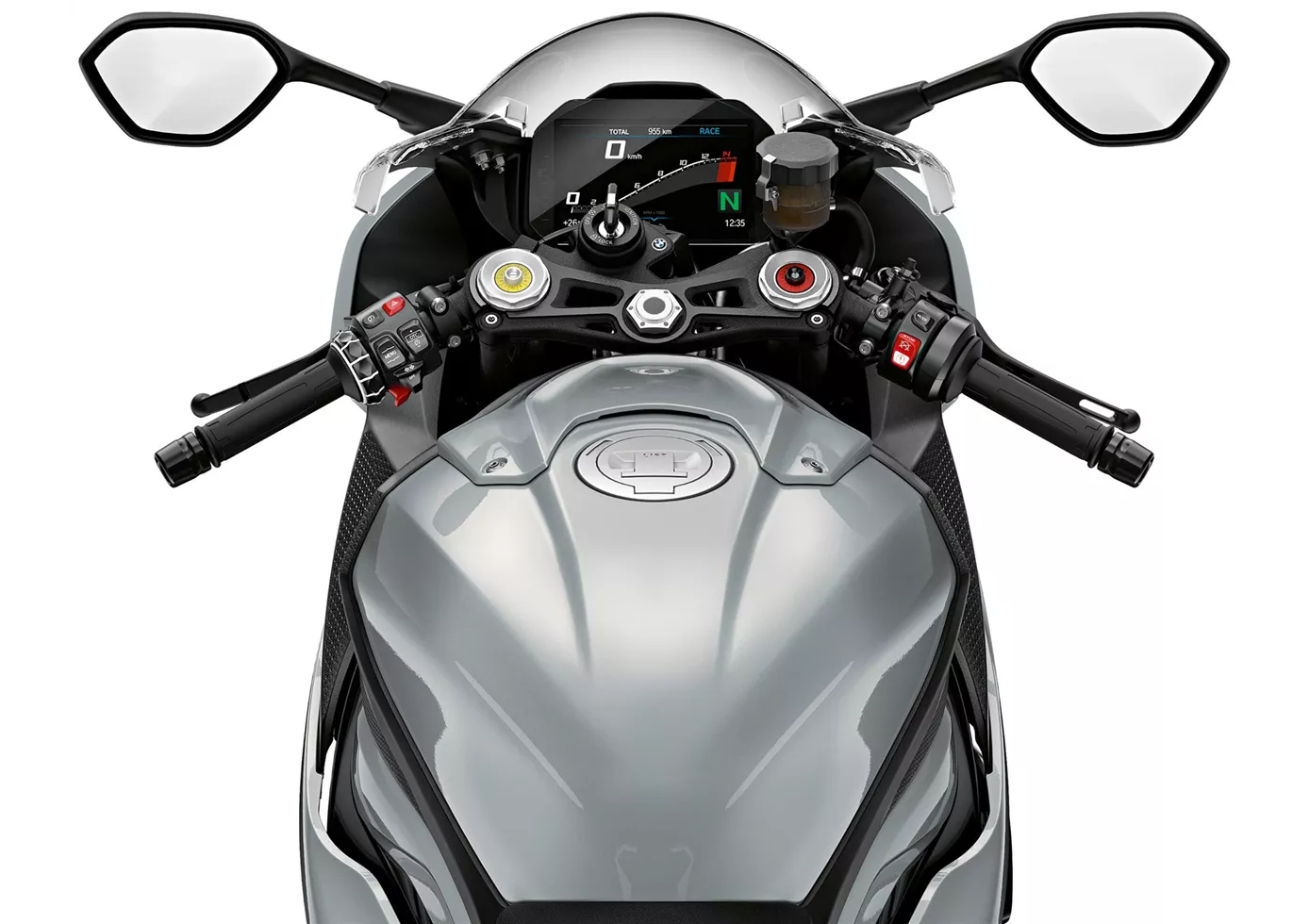Suzuki GSX 1300 R Hayabusa 2022 vs. BMW S 1000 RR 2020

Suzuki GSX 1300 R Hayabusa 2022

BMW S 1000 RR 2020
Overview - Suzuki GSX 1300 R Hayabusa 2022 vs BMW S 1000 RR 2020
The Suzuki GSX 1300 R Hayabusa 2022 and the BMW S 1000 RR 2020 are both high-performance supersport motorcycles with powerful engines and advanced rider assistance systems. However, there are some notable differences between the two models.
In terms of engine specifications, the Suzuki GSX 1300 R Hayabusa 2022 is equipped with a 1340cc in-line four-cylinder engine that produces 190 HP of power and 150 Nm of torque. On the other hand, the BMW S 1000 RR 2020 features a slightly smaller 999cc in-line four-cylinder engine that delivers 207 HP of power and 113 Nm of torque. While the Hayabusa has a higher displacement, the S 1000 RR offers more power and torque.
Both motorcycles have advanced suspension systems, with upside-down telescopic forks at the front and swing arm suspension at the rear. The Hayabusa offers adjustable compression, preload, and rebound settings for both the front and rear suspension, while the S 1000 RR provides the same adjustability. The rear suspension of both bikes is made of aluminum for improved performance and durability.

Suzuki GSX 1300 R Hayabusa 2022
In terms of chassis, the Hayabusa features an aluminum twin-spar frame with a rake of 23 degrees and a trail of 90 mm. On the other hand, the S 1000 RR has an aluminum frame with a twin-tube design that also serves as a load-bearing engine. It has a steeper rake of 66.9 degrees and a slightly longer trail of 93.9 mm. These differences in chassis design and geometry can affect the handling characteristics of the motorcycles.
Both motorcycles are equipped with double disk brakes at the front with a diameter of 320 mm. This ensures strong and stable braking performance. Additionally, both models come with advanced rider assistance systems such as ABS, riding modes, traction control, and quickshifters. The Hayabusa also offers additional features like anti-rollover control, hill start assist, cornering ABS, launch control, ride by wire, cruise control, and anti-wheelie control. These features enhance the safety and performance of the motorcycles.

BMW S 1000 RR 2020
In terms of dimensions and weights, the Hayabusa has a wider front tire width of 120 mm compared to the S 1000 RR's 120 mm front tire width. Both motorcycles have the same rear tire width of 190 mm. The Hayabusa has a slightly longer wheelbase of 1480 mm compared to the S 1000 RR's 1441 mm wheelbase. The seat height of the Hayabusa is 800 mm, while the S 1000 RR has a slightly higher seat height of 824 mm. The Hayabusa is also heavier with a kerb weight of 264 kg, while the S 1000 RR is lighter at 197 kg.
In terms of fuel tank capacity, the Hayabusa has a larger capacity of 20 liters compared to the S 1000 RR's 16.5 liters. Both motorcycles are equipped with LED headlights for improved visibility and aesthetics.
In summary, the Suzuki GSX 1300 R Hayabusa 2022 is known for its powerful engine, comfortable seating position, and mature chassis. It offers a comprehensive electronics package and comes with cruise control as standard. However, it is relatively expensive and has a high weight. On the other hand, the BMW S 1000 RR 2020 offers a linear power delivery, excellent performance, and a well-balanced overall package. It has a slightly smaller engine but delivers more power and torque. However, it may lack some character compared to other competitors and falls slightly behind on the spec sheet.
Technical Specifications Suzuki GSX 1300 R Hayabusa 2022 compared to BMW S 1000 RR 2020
Pros and Cons in comparison
Pros and Cons in comparison
Suzuki GSX 1300 R Hayabusa 2022

Hayabusa är en absolut legend, den första serieproducerade motorcykeln som kördes i över 300 km/h kan inte avfärdas som en bagatell. Men med nya Busa har Suzuki tagit fasta på tidens tecken. Den nuvarande modellen, med sin omfattande elektroniska utrustning inklusive farthållare som standard, är en utmärkt hyper-tourer. Ergonomin är fortfarande sportig, men föraren sitter väl integrerad i maskinen och har därmed också ett bra vindskydd. Bromsarna är stabila, väghållningen är fin och chassit är underbart stabilt och moget. Pricken över i:et är naturligtvis den enorma fyrcylindriga radmotorn på 1340 kubik, som imponerar med sina 190 hk. Ännu bättre är dock det maximala vridmomentet på 150 Newtonmeter, som känns tillgängligt redan från tomgång. När det gäller suveränitet är denna motor svår att slå!
BMW S 1000 RR 2020

En riktig "allround" superbike. BMW vet hur man utnyttjar sina styrkor både på racerbanan och på landsvägen. Tack vare variabel kamaxelstyrning är den kraftfulla motorn övertygande redan i botten och accelererar harmoniskt över hela varvtalsområdet, med gott om kraft i varje område. För hobbyföraren fungerar chassit utmärkt i alla situationer, ger transparent feedback och erbjuder många inställningsmöjligheter. Sittpositionen är sportig men ändå relativt bekväm. Elektroniken fungerar mycket harmoniskt utan att vara nedlåtande mot föraren - TOPP!
Price Comparison Avarage Market Price Suzuki GSX 1300 R Hayabusa vs BMW S 1000 RR
There are a few key differences between a Suzuki GSX 1300 R Hayabusa 2022 and a BMW S 1000 RR 2020. In terms of price, the actual average price of a BMW S 1000 RR 2020 is about 24% higher. A Suzuki GSX 1300 R Hayabusa 2022 experiences a loss of 470 USD in one year of ownership. This is offset by a loss of 430 USD for a BMW S 1000 RR 2020. Compared to BMW S 1000 RR 2020 there are less Suzuki GSX 1300 R Hayabusa 2022 bikes available on the 1000PS.de Marketplace, specifically 12 compared to 16. It takes less time to sell a BMW S 1000 RR with 68 days compared to 136 days for the Suzuki GSX 1300 R Hayabusa. Since model year 2005 1000PS.de editors have written 24 reviews for the Suzuki GSX 1300 R Hayabusa and 135 reviews for the BMW S 1000 RR since model year 2010. The first review for the Suzuki GSX 1300 R Hayabusa was published on 7/10/2007 and now has more than 10,000 views. This compares to more than 4,000 views for the first review on BMW S 1000 RR published on 4/16/2008.




















